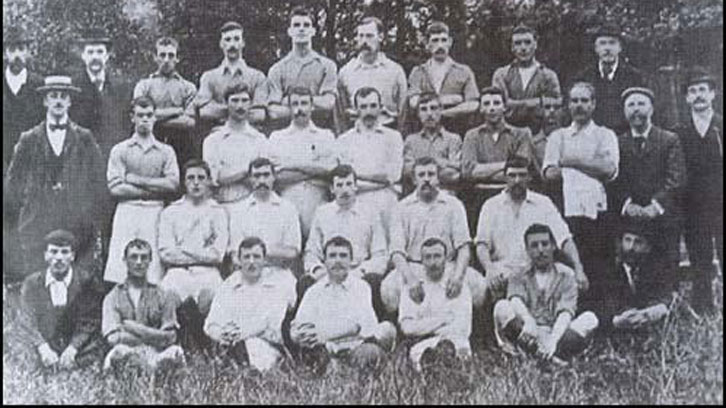
After being founded as an amateur works team for the Thames Ironworks and Shipbuilding Company in Canning Town, Thames Ironworks FC turned professional on entering the Southern League in the summer of 1898.
As the Club sought to become ever more competitive, professional players were signed from all over the country, with the Southern League Second Division title being won at the first attempt in the spring of 1899.
The following season, 1899/00, the Hammers needed a play-off victory over Fulham to retain their First Division status, and it was clear further improvements were needed if the Club was to continue on an upward trajectory.
Off the field, meanwhile, Thames Ironworks owner Arnold Hills wanted to acquire engineering firm John Penn & Sons in a takeover.
To raise capital to finance the deal, Hills decided to turn the Thames Ironworks and Shipbuilding Company into a public company, preventing him from using company money to fund Thames Ironworks FC in the future.
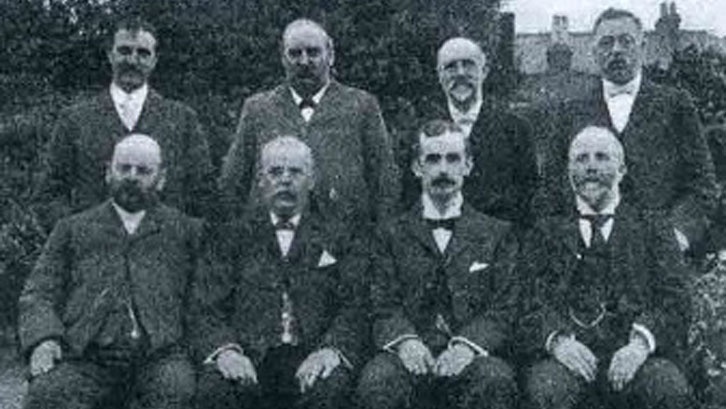
In spring 1900, proposals for a ‘reorganisation’ of the football club were published in the West Ham Guardian newspaper, followed by details of a share offer which would fund the new Club.
Hills offered four thousand, ten-shilling (50p) shares in the new public limited company, whose headquarters were based at 55 Barking Road, Canning Town. The philanthropic businessman also offered the use of the Memorial Grounds in Plaistow – the stadium he built for the Club in 1896 – for a nominal rent.
Anticipating the share offer would be under-subscribed, Hills promised to match the sale by buying one share for every other share purchased himself, while any fan who bought ten shares was promised a position on the Board of Directors.
It was hoped that at least 2,000 supporters would buy shares but even the ten-shilling price was out of the reach of many local people.
Regardless, the reorganisation went ahead and Thames Ironworks FC was wound up and resigned from the Southern League in June 1900.
A new Club, West Ham United, was formed almost immediately and incorporated as a company on 5 July 1900.
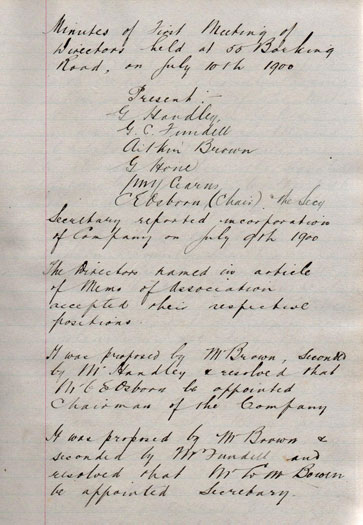
The minutes of West Ham United’s first Board meeting, held four days later at 55 Barking Road, reveal that the pioneering Board of Directors (pictured, above) who would supervise the fledgling football club were A. Brown, J.W. Cearns, G.C. Fundell, G.C. Handley, G.J. Hone and C.E. Osborn (chairman).
The Directors’ first task was to recruit Abraham ‘Abe’ Norris as trainer at 35 shillings per week (£1.75p). A number of the players from the Thames Ironworks club were also taken on, as many were still employed at the shipyard.
The former Ironworks players who would play a part over the coming season were goalkeeper Tommy Moore, defenders Syd King, Charlie Craig, Charlie Dove and George Neil, half-backs Robert Allan and Roderick McEachrane, and forwards Fred Corbett, Frank Taylor and Len Walker.
King, of course, would go on to become one of the most-important figures in the Club’s history, being appointed as the first manager in 1902 and holding the post for three decades.
In addition, a number of new players were signed to bolster the squad, including Scotsmen Billy Grassam and Jimmy Reid, who shared six of the goals in the 7-0 Southern League First Division victory over Gravesend in the new Club’s inaugural fixture.
West Ham United Football Club had been born.
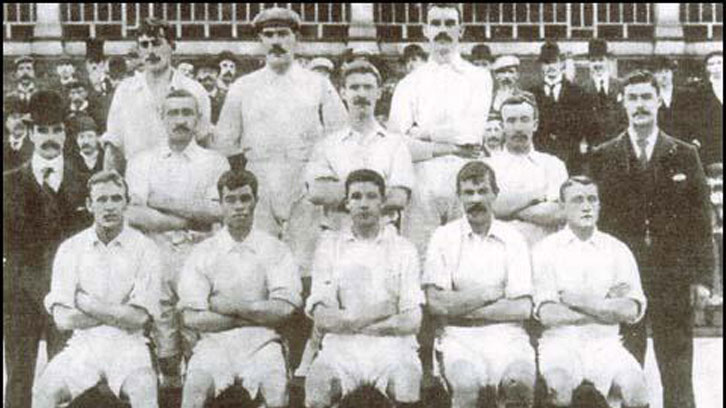
Having kicked-off their existence with a 7-0 Southern League First Division win over Gravesend, the newly-formed West Ham United enjoyed a successful first season.
After narrowly avoiding relegation in their final campaign as Thames Ironworks, the 1900/01 campaign was far more positive, with the Hammers finishing sixth of 15 and and winning ten of their 14 home matches at the Memorial Grounds.
There was also success in the FA Cup, where the Irons overcame Olympic, New Brompton and Clapton – the latter in front of 10,000 fans – to set up an intermediate round tie with Football League First Division champions-elect Liverpool.
The tie drew a 6,000 crowd to the Memorial Grounds on the first Saturday in January 1901.
West Ham gave a good account of themselves against their illustrious visitors, but lost full-back Charles Craig to a serious injury making a challenge on Jack Cox in the build-up to Liverpool’s goal, which was scored by Sam Reybould. Several defenders protested, but the referee allowed the goal and Liverpool won 1-0.
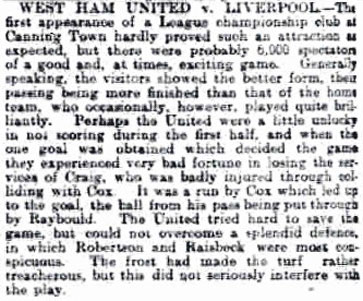
This being the days before substitutes, the Hammers were forced to play on with ten men, which they did heroically, but they were ultimately unable to score an equaliser and force a replay at Anfield.
Two months later, in early March 1901, interesting reports were published that West Ham could merge with their local Southern League rivals Millwall Athletic, whose home at The Athletic Grounds on the Isle of Dogs were to be turned into a timber yard by their landlords, the Millwall Dock Company.
The merger never took place and Millwall Athletic moved to North Greenwich, also on the Isle of Dogs, in the summer of 1901, before relocating south of the River Thames in 1910.
The 1901/02 season saw further progress on the pitch, with the Irons ending the campaign in fourth place, but there would have been realistic hopes of winning the Southern League title in October, when the team had won six of their opening seven matches.
November 1901 kicked-off with one of the more bizarre instances in the Club’s history.
Due to an administrative error, the team had to fulfil an FA Cup third qualifying round tie against Leyton on the same day, Saturday 2 November, as they were due to play Tottenham in a Southern League match.
To resolve this, the reserve team were sent to Leyton, where they won 1-0, and the first team entertained Tottenham before a crowd of 17,000 at Memorial Grounds, only to lose by the same scoreline.
In March 1902, the Club also had the honour of fielding its first full international.
Born in the small South Wales coal mining village of Penrhiwceiber, William Jones began his career with Aberdare Athletic before moving to West Ham’s Southern League counterparts Kettering in the summer of 1901.
By then, the defender was already a Wales international, having debuted against Scotland and played against England in March 1901.
After a short spell with Kettering, Jones moved to West Ham United in a swap deal for Scottish forward Peter Kyle. In 15 appearances for the Hammers, the team lost just twice, and the impressive half-back was named in the Wales team again for a goalless draw with England in Wrexham in March 1902. Two weeks later, he earned his fourth and final cap in a 5-1 defeat by Scotland in Greenock.
Jones returned to his home country to finish his career before joining the Royal Welch Fusiliers and fighting for his country in World War I. Sadly, this important figure in West Ham history was killed in action and buried at the Doiran Military Cemetery in northern Greece.
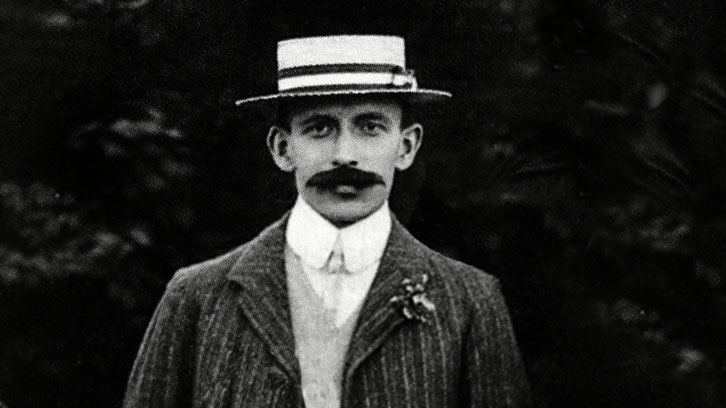
The summer of 1902 was marked by another historic moment as West Ham United appointed its first ‘manager’, Syd King (pictured, above). A distinguished full-back, King had joined Thames Ironworks in 1899 and remained with the Club following its reformation the following year.
Just 29, King was appointed Club secretary, although he was already considered to be the man in charge of the Club, both in terms of administration and the football side of things.
His first season in charge was not particularly successful, though, as West Ham stumbled along to a tenth-place finish in the Southern League and were knocked out of the FA Cup at the first hurdle by Lincoln City.
King was just getting started, however…
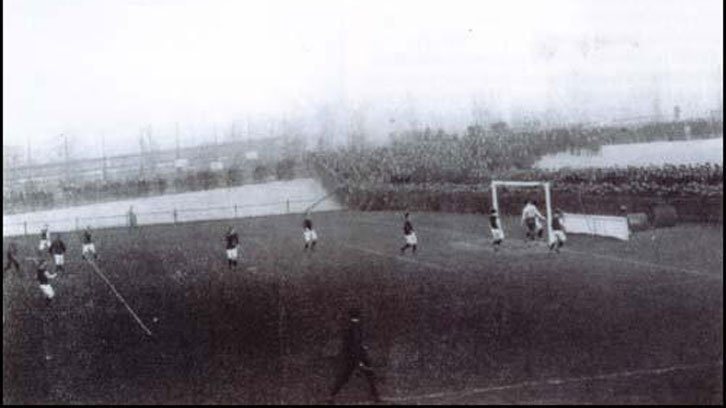
The 1903/04 season was not a good one for West Ham United.
The Club’s Directors were seriously concerned about its financial position, with losses of £900 reported over the course of the previous two seasons, a large overdraft and assets of under £200.
Something drastic had to be done to improve things.
Manager Syd King made changes to his squad, with prolific striker Billy Grassam joining Manchester United and full-back Dick Pudan leaving for Bristol Rovers.
Into their places came forward Charles Satterthwaite from New Brompton and defender Tommy Allison from Reading, alongside winger William Kirby and forward Herbert Lyon.
Satterthwaite and Kirby combined to score 29 goals between them, but still the Irons struggled for consistency in the Southern League, losing half of their 34 games to finish in a lowly 12th place.
West Ham’s FA Cup form was better, with wins over Brighton & Hove Albion, Clapton Orient and Chatham Town securing a place in the intermediate round, where they lost 1-0 to Fulham in front of 12,000 fans at the Memorial Grounds – their highest home attendance of a mediocre season.
As the season came to a close, the Directors knew big decisions had to be made to secure West Ham United’s long-term future.
With founder and Thames Ironworks & Shipbuilding Company managing director Arnold Hills also having financial issues, the rental arrangement for the Memorial Grounds – the huge multi-sports arena bankrolled by Hills in what is now West Ham – came to an end and the Club needed to find a new home.
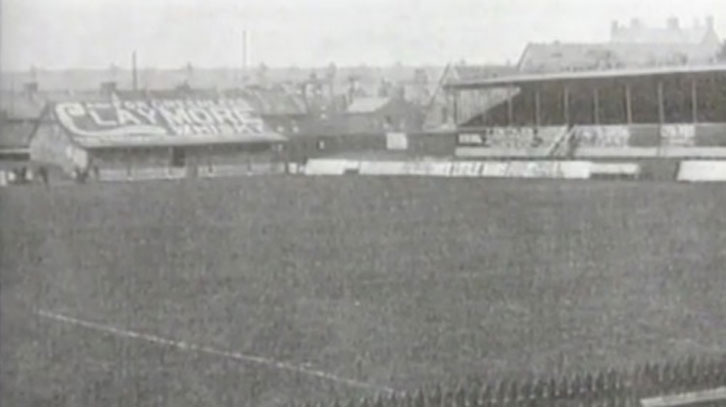
A lease was signed for a plot of land next to and in the grounds of Green Street House in Green Street, Upton Park.
The field in which the pitch was to be laid was originally used to grow potatoes and cabbages and, as such, the pitch was often referred to by the locals as 'The Potato Field' or 'The Cabbage Patch', while the ground itself was originally named ‘The Castle’ during its initial 1904/05 season.
Initially leased from the Roman Catholic Ecclesiastical Authorities – but not before a lengthy debate that saw manager Syd King visit his friend, the influential West Ham North MP Sir Ernest Gray – the Hammers' new home originally consisted of a small West Stand and covered terrace backing onto Priory Road, along with dressing rooms situated in the north west corner between the West Stand and North Bank.
As King later explained, ‘through his (Sir Ernest Gray’s) good offices, subject to certain conditions, we were finally allowed to take possession of Boleyn Castle’.
By then, however, Satterthwaite and Kirby had both departed, to Arsenal and Swindon respectively. Goalkeeper Fred Griffiths had also left, for New Brompton, and was replaced by Matt Kingsley, signed from Newcastle United.
During a summer of huge change, on and off the pitch, King also recruited Charlie Simmons (West Bromwich Albion), Frank Piercy (Middlesbrough), Herbert Bamlett (Newcastle United), William McCartney (Everton), Jack Flynn (Reading), John Russell (Everton), David Gadiner (Newcastle United) and Jack Fletcher (Reading), and also introduced youngster Billy Bridgeman.
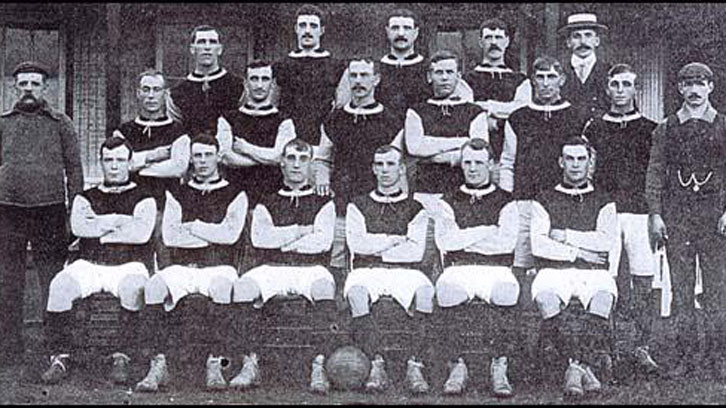
West Ham's first game at their new home was against Millwall on 1 September 1904. It drew a crowd of 12,000, the majority of whom were rewarded as West Ham ran out 3-0 winners, with teenager Bridgeman scoring two of the goals.
The next home game, against Queens Park Rangers, attracted 14,000, while a derby with Tottenham Hotspur on 24 September drew a record 16,000.
Results were up and down, with the highlight being a 6-2 home win over Luton Town in January 1905, but generally the Club’s fortunes were moving in the right direction.
The Castle proved to be a strong base, too, with nine of the 17 home Southern League fixtures ending in victory, and just five ending in defeat.
By the season’s end, West Ham were up to a respectable tenth, with Bridgeman scoring eleven goals, Simmons eight and Fletcher seven.
Fifty years ahead of the advent of the Academy of Football, there was also praise for the Club’s ability to unearth and blood local talent.
The 1905 edition of 'Association Football' enthused: "It is the proud boast of the West Ham club that they turn out more local players than any other team in the South. The district has been described as a hot-bed of football and it is so. The raw material is found on the marshlands and open spaces round about; and after a season or so, the finished player leaves the East End workshop to better himself, as most ambitious young men will do. In the ranks of other organizations many old West Ham boys have distinguished themselves."
Financially, the Irons were also out of the fire, with a £400 profit reported, largely thanks to a huge increase in gate receipts.
After a tumultuous period, West Ham United was on solid ground.
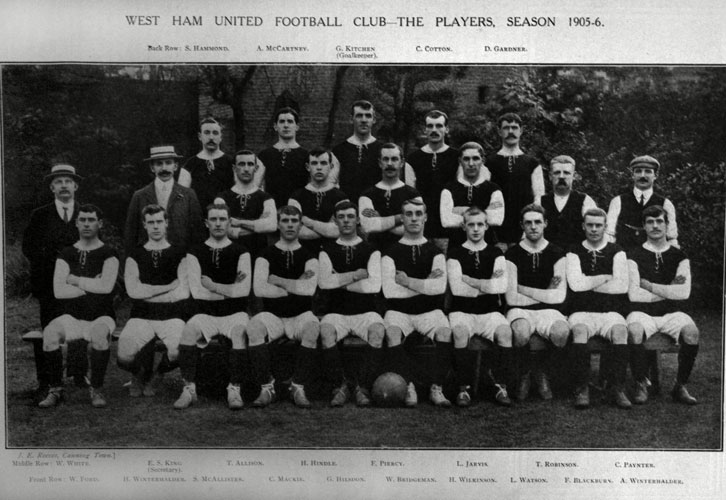
Having moved into the Boleyn Ground and seen the Club’s finances turned around, West Ham United sought to improve their playing squad in the summer of 1905.
Goalkeeper George Kitchen arrived from Everton, England international Fred Blackburn from Blackburn Rovers and former schoolteacher-turned-centre forward Harry Stapley recruited from Woodford Town, while former striker Billy Grassam returned from Manchester United.
Enthusiasm for the team was growing, with 10,000 turning out to see 'keeper Kitchen score an unlikely winner from the penalty spot in a 1-0 victory over Swindon Town.
However, results were not good overall and the Hammers struggled for form in the Southern League, finishing eleventh.
There was relief in the FA Cup again, where the Irons pushed the mighty Woolwich Arsenal all the way in front of 18,000 fans in Plumsted, forcing a replay through another Kitchen penalty, only to lose the second meeting 3-2 at the Memorial Grounds.
Manager Syd King signed more reinforcements in the close-season of 1906, including Scotland international David Lindsay, and the season began with a 2-1 Southern League win over Tottenham Hotspur.
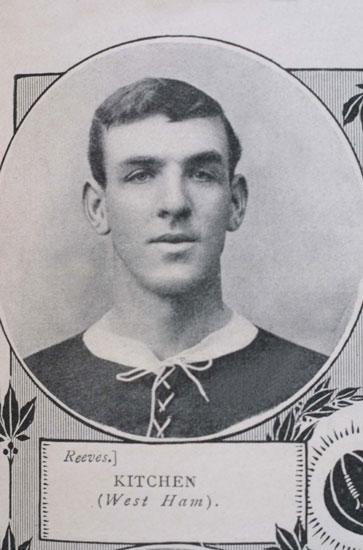
Lionel Watson then bagged a hat-trick in a 5-1 thrashing of Luton Town, before the Irons edged a bad-tempered meeting with local rivals Millwall through yet another spot-kick from goalkeeper Kitchen.
January 1907 saw Blackpool visit the Memorial Grounds in the FA Cup and West Ham won 2-1 in front of 13,000 fans, securing their first-ever competitive win over Football League opposition.
First Division Everton were the Irons’ second round opponents, and 14,000 were present to see the Toffees edge through 2-1.
By the season’s end, Stapley had scored 22 goals and the returning Grassam ten to help the Hammers to 12 home wins in 19 Southern League matches at the Memorial Grounds and a fifth-place finish – their highest since 1901/02.
However, the positivity was tempered by the Board’s concern about the behaviour of a number of players, with the drinking of alcohol considered a problem.
In his book, West Ham United: The Making of a Football Club, Charles Korr wrote: “Curfews were enforced on players, wages were held in trust for individuals who had drinking problems and a doctor's certificate was required for any failure to play or train.”
King also appointed Frank Piercy as his new captain, replacing the retiring David Gardner, and signed a striker named Danny Shea who had been spotted playing for a local pub team, The Builders Arms.
However, Piercy got into an altercation with a Swindon player, Charlie Bannister, in the season’s opening game and was banned for four weeks by the Football Association. On his return, he was sent-off for a tackle on Millwall’s Charlie Comrie and suspended again!
The more positive side of the new skipper was seen in the FA Cup, where the Hammers defeated Rotherham United to set up a trip to St James’ Park to face Newcastle United. There, 47,000 fans saw the Irons beaten 2-0, having lost Kitchen to injury, put captain Piercy in goal and played a portion of the tie with only ten men.
Overall, though, a disappointing season ended with a tenth-place finish in the Southern League.
The year 1908 also saw London host the Summer Olympic Games for the first time and Stapley’s goals saw him selected to represent Great Britain at the London Olympics.
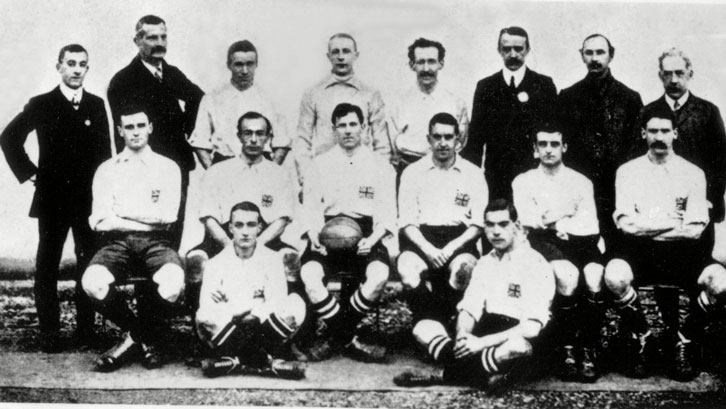
The young Hammer was instrumental as the host nation won the Gold, scoring twice in a 12-1 thrashing of Sweden in the first round and all four goals in a 4-0 win over the Netherlands in the semi-finals. A 2-0 win over Denmark in the final at White City meant England were Olympic champions.
Unfortunately, West Ham's Olympian did not hang around to show off his silverware, instead taking up a teaching job in Derbyshire and later joining Glossop.
Shea stepped up to score the goals that Stapley had netted in previous seasons, managing 20 of his own, but the Irons again struggled in the Southern League, finishing in a lowly 18th place.
Again, it was the FA Cup that provided the most cheer, with wins over Queens Park Rangers and Leeds United – the latter following a 1-1 draw in front of 31,000 at Elland Road – setting up a third-round tie with Newcastle at the Memorial Grounds.
Some 17,000 turned out to see the Hammers take on the Magpies but, despite a goal from Shea, the visitors ran out 2-1 winners.
And the decade ended with yet more FA Cup heroics in the 1909/10 season.
With King now selecting as well as training the team, having taken the responsibility from the Directors, Carlisle United and 1908 winners Wolverhampton Wanderers were brushed aside 5-0 and 5-1 respectively. QPR provided the opposition in the third round and, following a replay, edged out the Irons in front of 18,000 fans at the Memorial Grounds.
Shea’s 31 goals saw West Ham finish an improved ninth in the Southern League, too.